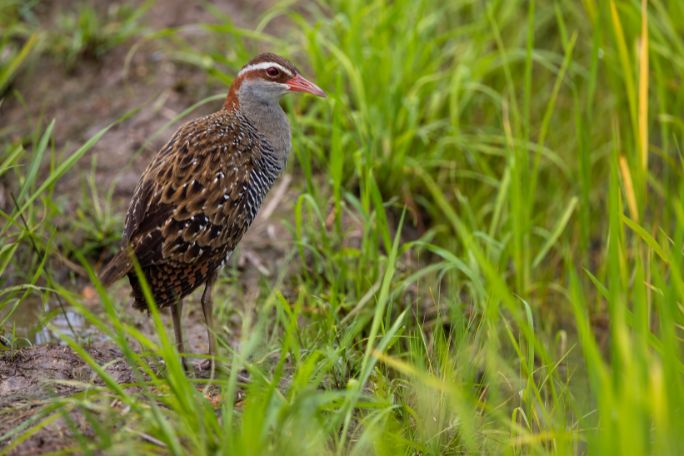Lesson summary
Students explore adaptations in animals, with particular reference to Lord Howe Island. They begin by reviewing their prior knowledge of Lord Howe Island before exploring the concept of adaptation and how it relates to islands. They then investigate the Lord Howe Island stick insect, applying their knowledge of adaptation to this species, before creating a diorama of the species in its natural habitat, sharing it with the class through a gallery walk. Students who have completed the previous lesson in this unit can film and narrate their diorama and upload it to their Lord Howe Island Library Padlet.
Learning intentions:
Students will...
- understand what adaptation is
- recognise the differences between structural adaptation and behavioural adaptation
- understand why islands are interesting in terms of plant and animal adaptations
- recognise some of the animal species that live on Lord Howe Island and their adaptations.
Success criteria:
Students can...
- demonstrate knowledge of adaptation and how it applies to animals under a range of environmental factors
- conduct research in order to investigate species from Lord Howe Island, including the Lord Howe Island stick insect and the Lord Howe woodhen
- create a diorama to communicate information about a species from Lord Howe Island, including the adaptations of this species
- participate in a demonstration aimed at showing how beak size in birds is determined by food sources
- think creatively about their own island and create an animal that is adapted to the geographical features.
Lesson guides and printables
Lesson details
Curriculum mapping
Australian curriculum content descriptions:
Year 5 Science:
- Living things have structural features and adaptations that help them to survive in their environment (ACSSU043)
- Identify, plan and apply the elements of scientific investigations to answer questions and solve problems using equipment and materials safely and identifying potential risks (ACSIS086)
- Communicate ideas, explanations and processes using scientific representations in a variety of ways, including multi-modal texts (ACSIS093)
Year 6 Science:
- The growth and survival of living things are affected by physical conditions of their environment (ACSSU094)
- Identify, plan and apply the elements of scientific investigations to answer questions and solve problems using equipment and materials safely and identifying potential risks (ACSIS103)
- Communicate ideas, explanations and processes using scientific representations in a variety of ways, including multi-modal texts (ACSIS110)
Syllabus outcomes: ST3-4WS, ST3-10LW, ST3-11LW
General capabilities: Critical and Creative Thinking
Cross-curriculum priority: Sustainability OI.2
Relevant parts of Year 5 Science achievement standards: Students analyse how the form of living things enables them to function in their environments. They communicate their ideas and findings using multimodal texts.
Relevant parts of Year 6 Science achievement standards: Students describe and predict the effect of environmental changes on individual living things. They collect, organise and interpret their data and construct multimodal texts to communicate ideas, methods and findings.
This lesson is part of the wider unit of work Lord Howe Island – Years 5 & 6
Time required: 60 mins
Level of teacher scaffolding: Medium – facilitate class discussion, oversee group activities
Resources required
- Adaptation Factsheet
- Device to take photos (optional)
- Marbles
- Materials to make a diorama
- Salt
- Tweezers
- Two bowls
- Student Worksheets – one copy per student
Skills
This lesson is designed to build students’ competencies in the following skills:
- Communication
- Creativity
- Critical thinking
- Problem solving
- Collaboration
Additional info
If you would like to access additional information about Joshua Yeldham and the photographs of his wonderful exhibition 'Providence'. Please visit the Arthouse Gallery website: Joshua Yeldham - Providence (arthousegallery.com.au/exhibitions/joshua_yeldham/providence) and the artist's website: Joshua Yeldham (www.joshuayeldham.com.au) for exhibitions and his wonderful book: Surrender (joshuayeldham.com.au/the-books). Providence and Surrender were completed during and after his Artist Residency on Lord Howe Island and during his stay at the Capella Lodge (capellalodge.com.au) on Lord Howe Island.


Welcome back!
Don't have an account yet?
Log in with:
By signing up to Cool.org you consent and agree to Cool's privacy policy to
store, manage and process your personal information. To read more, please see
our privacy policy here(Opens in new tab).
Create your free Cool.org account.
Many of our resources are free, with an option to upgrade to Cool+ for premium content.
Already have an account?
Sign up with:
By signing up to Cool.org you consent and agree to Cool's privacy policy to
store, manage and process your personal information. To read more, please see
our privacy policy here(Opens in new tab).